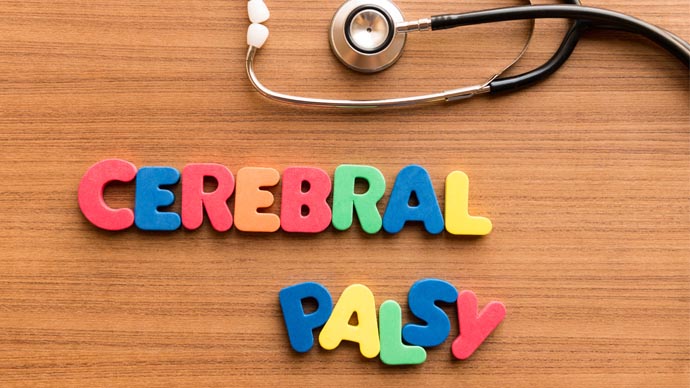Motor function in individuals with Cerebral Palsy can be improved through stem cells derived from umbilical cord blood. According to a study published by Duke University Medical Center, infusions using individual’s own umbilical cord blood helped their children with spastic Cerebral Palsy gain improvements in their brain connectivity and motor function.
What is Cerebral Palsy?
Cerebral Palsy refers to a disorder of motor function that affects the balance, movement and the muscle tone. “Cerebral” refers to the disorder related to brain and “Palsy” means weakness or a muscle problem. It can be associated with symptoms such as difficulty in speaking, walking, poor balance and involuntary movement. Some may also face intellectual disabilities, while many have normal intelligence.
Such poor control of extremities is a result of brain damage or abnormal development of the brain before, during or after birth. It generally gets detected in infants and toddlers. Doctors always can’t figure out the exact reason behind the damage of the brain or disruption in its development. Most of the people with Cerebral Palsy are born with it – known as “Congenital” Cerebral Palsy and in some it starts after birth known as “Acquired” Cerebral Palsy.
Latest Research Findings
According to Joanne Kurtzberg, professor of pediatrics and Jerome S. Harris, senior author of the study, patients can live for decades through access and availability through appropriate support, however, they cannot take care of themselves. Presently, the treatment falls under the category of Physical and Occupational Therapy.
Till date, there is no cure available for Cerebral Palsy although invasive procedures such as Botox injections do exist. The findings suggest that Stem Cell rich umbilical cord blood has therapeutic potential which can pass signals to the body and help in repairing some of the damage caused to the brain which resulted in the disease in the first place.
The study included 63 patients in the age group ranging from one to six with Cerebral Palsy between mild to moderately severe conditions. Each of them had their umbilical cord blood already conserved in a blood bank. Kurtzberg mentioned that patients suffering from the most severe form of Cerebral Palsy- Gross Motor Classification System Level V were not included in the study due to safety risk of travel involved.
Half of the patients were given umbilical cord blood infusions whereas the other half was given the placebo. This was done only after confirming the patient’s eligibility and checking their progress with an MRI can and after many rounds of tests and evaluation by the neurologists, physical therapists and other specialists.
Kurtzberg mentions that during the study, the dose of cord blood administered to each child was not controlled. Minimum dose provided at the time of infusion was 10 million cells per kilogram of the child’s weight.
The patients were assessed again after a year. According to the researchers, children given a dose of minimum 20 million cells per kilogram of the body weight showed the maximum improvement in the brain connectivity and motor function. Following this, the treatments were switched between the placebo and the experimental groups implying that the children who had been given placebo treatment were given cord blood infusions and vice versa.
A year later, the scientists reassessed the patients who had received a dose of cord blood at some point of time in the previous two years. The findings from the reassessments confirmed that children whose doses exceeded 20 million cells per kilogram showed the most significant improvement than those provided with lesser dosage.
Jessica Sun, assistant professor of pediatrics and also the lead author of the paper, pointed out the limitations of the applicability of the study during a Duke Health release. She mentioned that the eligibility requirements of the study were narrow in its scope, targeting only the wealthy families who could afford such a frequent Physical and Occupational Therapy for their child. Kurtzberg added that this along with the restrictions in the age of the patient as well as the severity of the disease, limited the application of the study’s results.
Kurtzberg observed that the findings of the study were exciting. She mentioned that in future, studies would look into the effectiveness of donated umbilical cord blood (from siblings) for patients with Cerebral Palsy and without their own supply to be used for the treatment. She said that some of the unpublished data reflected that siblings’ cord blood was safe and effective to be used for treatment of Cerebral Palsy. Kurtzberg also showed her interest in expanding the potential of Stem Cell Therapy to all the children suffering from the disease.
Moreover, Jessica Sun also mentioned during the release that they were hopeful that the cord blood and Stem Cell Therapy could play a role in treating the children suffering from Cerebral Palsy and Brain injury.
Verita Neuro offers access to extensive Stem Cell treatment for Cerebral Palsy. Its effective combination of advanced medical technology with functional medicine has helped many patients with Cerebral Palsy achieve significant improvements. For further information about the treatments, feel free to send us an enquiry. One of our Patient Representatives shall get back to you to discuss your treatment options.
H/T: Duke Chronicle
Web MD




 English
English